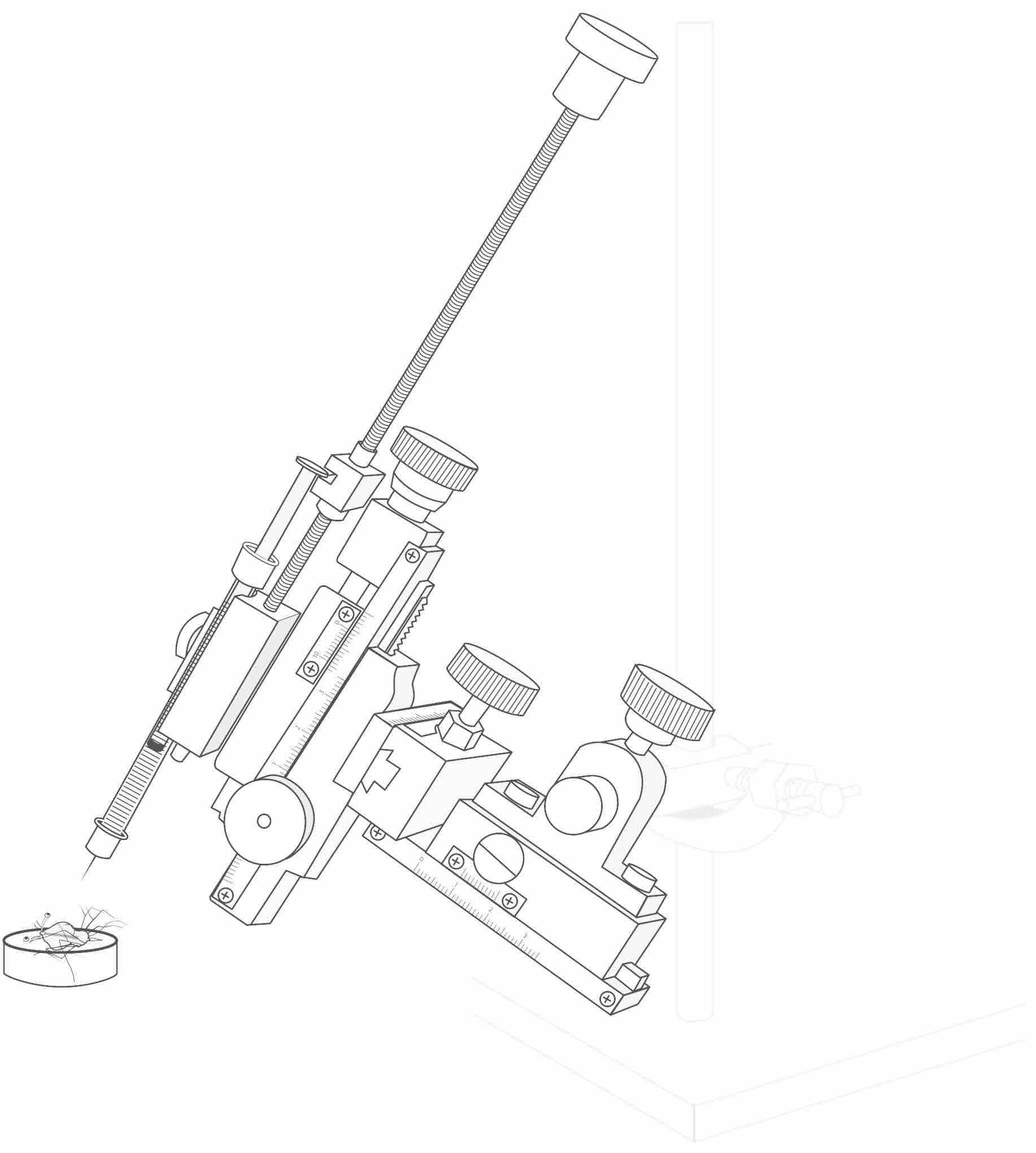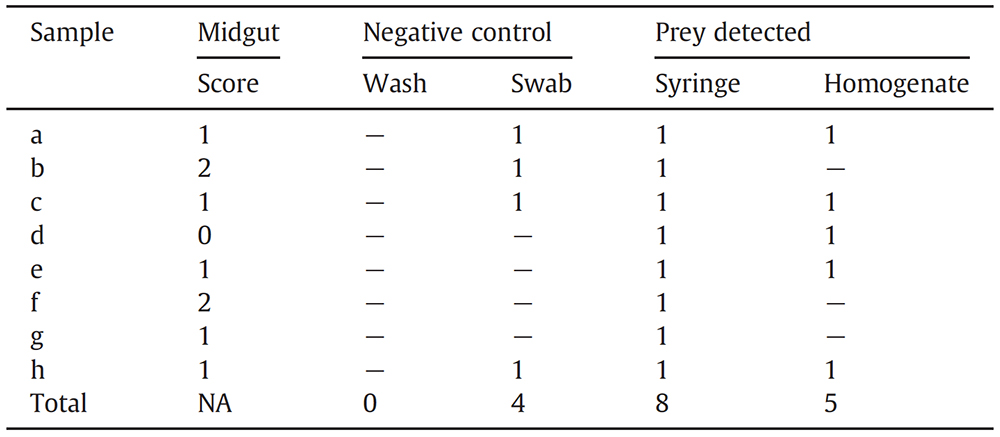| Home | Phyllosoma | Phyllosphere | Culturing | Jellies | Publications |
|---|
An inexpensive and sterile method for sampling DNA from larval guts

A common way to get dietary DNA from the guts of small organisms is to homogenise the whole animal. To reduce contamination from DNA adhered to the outside of the animal, they can be washed in water or buffer first, sometimes they are bleached, but this is the general approach. I found that washing, even when excessive, did not remove all exogenous DNA from the outside of the animal. I was therefore pretty determined to not homogenise larvae, but instead find a method that was cheap and sterile to dissect their gut out. This seemed tricky as they are small animals and their gut is paper-thin.
My solution to getting DNA out of larvae was to build a turn-screw (otherwise known by the fancy name of a “linear actuator”) from bits and pieces that I purchased from a model airplane shop near the University. I then mounted a disposable insulin syringe on this and, to have fine control, I geared it so that several turns were needed to suck a microliter of gut contents out of the animal. Insulin syringes are great for ecology work; they’re cheap (a few cents), sterile and have very fine needles of 29-guage or smaller. This was mounted on a micromanipulator and used under a UV-treated laminar flow hood in a space that was PCR free.

Read the Publications
O’Rorke, R., Jeffs AG, Fitzgibbon Q, Chow S, Lavery S (2013) Extracting DNA from whole organism homogenates and the risk of false positives in PCR based diet studies; a case study using spiny lobster larvae. Journal of Experimental Marine Biology and Ecology 441: 1-6
| Home | Phyllosoma | Phyllosphere | Culturing | Jellies | Publications |
|---|